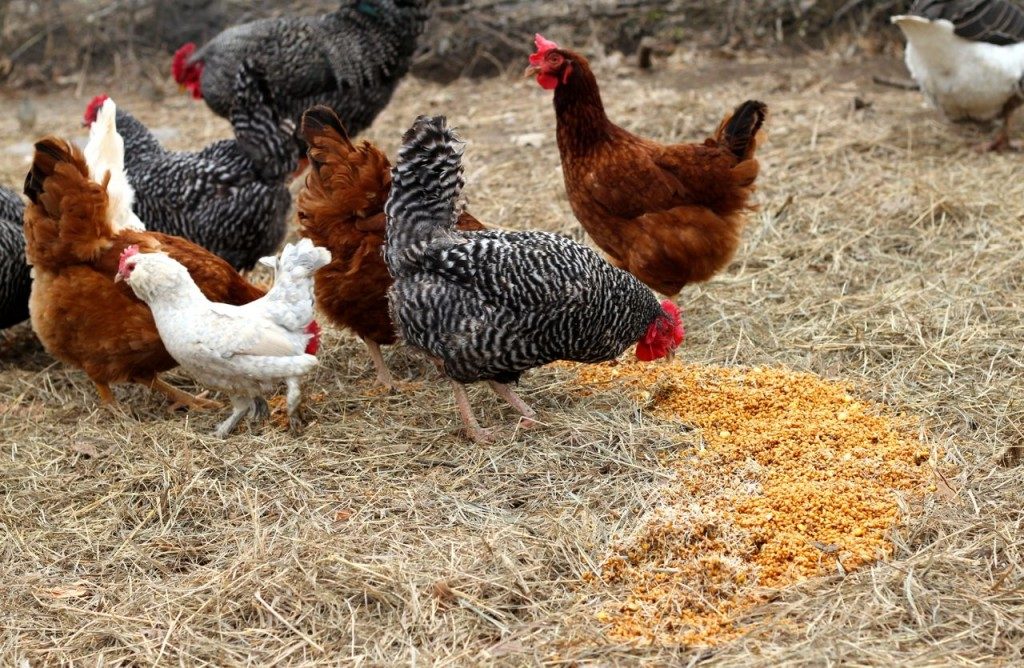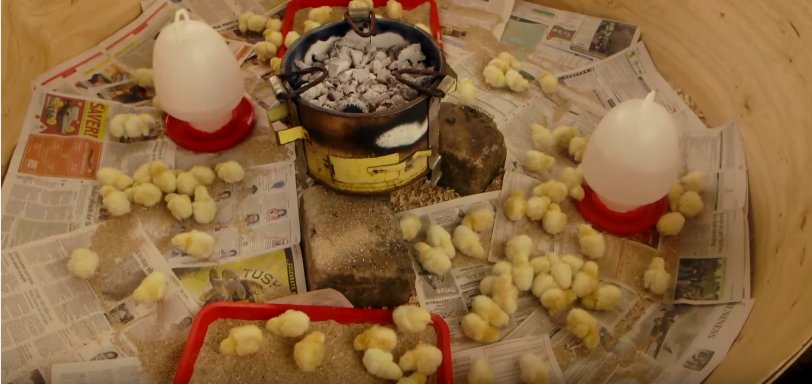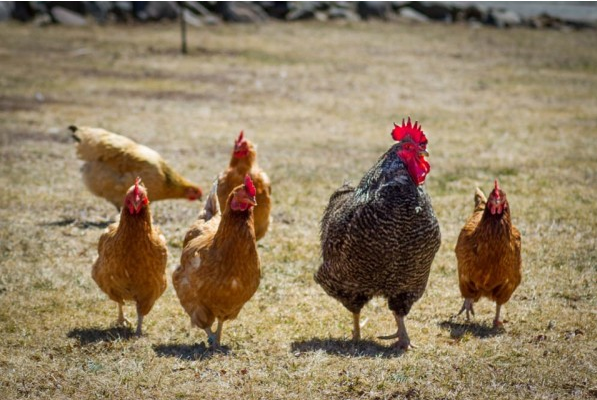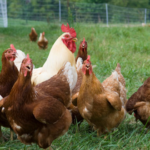Just as in any other system where social hierarchy is respected in the animal kingdom and among humans, chicken also have their pecking order and it is not uncommon to find chicken who consider themselves belonging to some higher social standing either due to seniority from age or body size engage in pecking. This is the pulling of feathers of another smaller or weaker bird either for fun or as a form of discipline, just as humans may scratch the heads of their children when angry or just playfully. However, this behavior among chicken should be closely watched because when it gets to the extreme it leads to cannibalism.

Ordinarily laying hens are more prone to this behavior and they will almost always peck on the very short feathers carefully avoiding long ones. Research has also found great information to the fact that chicken laying eggs with a brown shell are more likely to be peckers than those laying the white ones. This kind of chicken behavior is more prevalent where chicken are raised in houses with raised floors or where farmers keep large numbers of chicken in the free range system as we usually do with indigenous chicken (kienyeji). In cases where birds are caged, the social order is more stable and hence this behavior is very minimal.
Cannibalism is a behavior chicken learn and if unchecked can spread very rapidly among your chicken flock. In cannibalism chicken pluck or tear skin tissue from fellow chicken. This usually happens on chicken of any age or any type of bird. Normally this is a learned behavior. When Chicken see their mates doing it, they quickly copy and this may lead to heavy tearing of the flesh, infections and death. This kind of behavior is easy to identify early and prevent rather than stop when it finally becomes a habit among the flock.
What are the causes of cannibalism?
Feeding: giving your chicken less feeds or unbalanced feeds can be a major cause of pecking and cannibalism. Giving your flock feeds that are high in energy but low in fibre can make them irritable and easily want to attack their mates. Feeds that are also deficient in proteins, phosphorous and sodium can also lead the chicken to crave certain nutrients and begin to look for them from the skin of their mates. Chicken are also created with a natural instinct to look for food. If they are not provided with things to peck like greens, then their instinct leads them to peck others. Farmers should however take extra caution to only give greens early so when chicken are going to sleep most of it would have been digested.
Dead chicken: farmers sometimes fail to visit the chicken house regularly. There could have been cases of death or injury among the flock which escaped the farmer or caretaker giving the other active chicken a platform to start pecking and cannibalism. The chicken house should therefore be built in such a way that it is not prone to injuring birds. The house should also be visited to check conditions regularly. This prevents a natural instinct to peck on anything injured or dead.

Size of birds in the chicken house: When the birds too many, it is difficult to develop a social order or superiority. This breakdown helps in avoiding aggressiveness towards each other. When the flock is too small, hierarchy sets in and the tendency to inflict dominance in others which starts with pecking sets in. So always make sure as a preventive measure to have more than thirty birds or not less than this number.
Population: Build your chicken house to avoid overcrowding. Avail enough feeders and drinkers so the chicken never have to fight over feed or water, a first step in pecking and finally cannibalism. The housing unit should also have perches so weaker chicken under constant attack can leave their aggressive counterparts and perch above them. Finally, build a house with enough space, preferably one square feet per bird space at the very minimum.
Temperature: Anything that makes the birds aggressive and irritable leads to pecking. This could be significant changes in temperature. Farmers should be very careful to ensure brooding temperatures and the temperatures of the chicken house do not go to extremes.
Light: Provide only what is necessary. Very hot light for long hours can irritate chicken. Do not use a bulb of more than 40W in the chicken house and it should not give continuous lighting for more than 16 hours.
Colour and Size: lumping birds of the same color, age, breed and size if they have not been raised together can significantly upset the social order in the kienyeji chicken house and lead to serious issues of cannibalism and pecking.
Laying boxes: If you provide inadequate nest boxes, chicken will fight for them leading to caes of pecking and finally cannibalism.
Change: If you are to make changes in the kienyeji chicken house, make sure they are done procedurally to avoid irritating the chicken. Do not change location abruptly without moving some of the items like feeders that they used in the previous location. If you have to change feeders or drinkers from small to large ones, do it gradually such that you mix the bigger and smaller ones initially as you withdraw the smaller ones gradually.
Controlling pecking nd cannibalism
- Have light that is not too bright and for less than sixteen hours.
- Separate birds that are actively doing pecking and also the injured birds to avoid the problem getting out of hand.
- Build housing units with perches as an escape and rest for weaker birds.
- The beaks of very aggressive birds can be covered using goggles.
- Give enough, balanced feed with all ingredients.
- Make sure there is enough space in the housing unit and enough water and feeders/drinkers.
To get help on how to prepare a balanced chicken feed from the comfort of your own home, you can get access to this chicken feed formulation manual through the following link: http://www.kienyejichicken.com/feed_formulation.php


